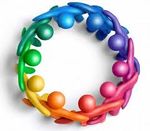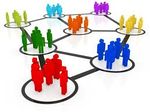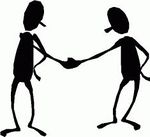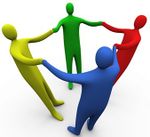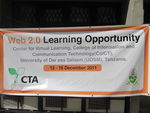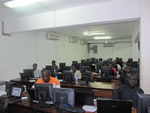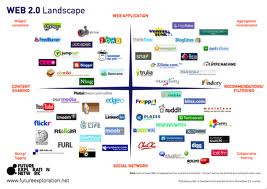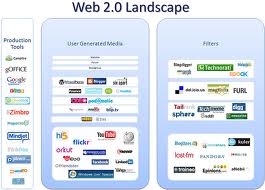User:Wikiyombo
Contents
About WikiYombo Group
We foster on communication, collaboration, interaction, sharing etc etc so NETWORKING is necessary! Web 2.0 is there for you! Step in now....you'll never regret!!
Participants Attended
The Web2forDev workshop which was conducted from 12th to 16th Dec 2011 included participants from Tanzania only. The participants came from various organisations within Tanzania as listed underneath,
- UDSM (COICT, UCC, UDBS, CVL)
- MUCE
- DUCE
- SUA
- ACT - MARA
- MJUMITA
- Technoserve
- MAFC
- Daily News
- Kilosa Rural Services Electronics Communication(KIRSEC)
- Wildlife Conservation Society of Tanzania (WCST)
- LUMOCONS LTD
- BRITEN
- Indigenous Heartland Organisation (IHO)
- Ministry of Agriculture, Food Security and Cooperatives
- Ministry of Education and Vocational Training
Members who can collaborate
The rest of the group members!
Group members involved in creating this Wiki are
- Robert Suphian - Chairman (UDBS - UDSM)
- Suzan Lujara - member (COICT - UDSM)
- Escain Kiwonde - member (ACT - MARA)
- Denis Mkwati - member (UCC - UDSM)
We have learned
- Search Strategies: How to conduct advanced multilingual online searches, using online translation facilities especially Google platform.
- Information Self Service: How to get selected information served to you via alerts and RSS feeds. We also covered on Google desktop iGoogle where participants were shown how information from various sources can be aggregated into one area for easy of management.
- Remote collaboration: How to develop content remotely using wikis and Google Docs. On wikis we used wikieducator.org as the platform for practice although there many other options. In Google Docs we covered things like document sharing, form creation and performing online surveys.
- Online mapping: How to locate your organization and your projects on a online Map, embedding developed maps into other applications using .kml files. We also developed a sample project using Google Maps.
- How to communicate voice over the internet at no cost, using Skype and Google talk. We also went further to learn on how to use video conferencing, performing presentations and SMS to mobile users.
- Online publishing (micro-blogging and blogging). Here we covered on how to create a blog using blogger.com from Google, we also inserted maps and video links from other applications like YouTube and Google Maps.
- Professional / corporate social networking (LinkedIn and Facebook);Here we covered on updating information on the social network, the implications of social networks in connecting people, information dissemination, adding applications i.e FaceBook, ability to perform presentation using Google Docs through LinkedIn
Web2.0 Concepts
Web 1.0 was all about connecting people. It was an interactive space, and Web 2.0 is a piece of jargon, nobody even knows what it means. If Web 2.0 is blogs and wikis, then that is people to people.
In the last 15 years the Web has grown from a group work tool for users in an organization into a global information space with more than a billion users. These trends have led to a feeling that the Web is entering a ‘second phase’—a new, ‘improved’ Web version 2.0. The world is using Web 2.0 as the tools, new technologies and services to make their websites to be more attractive, simple, usable, bright and sharable by designing it with web 2.0 standards.
The term Web 2.0 is associated with web applications that facilitate interactive systemic biases, interoperability, user-centered design and developing the World Wide Web. A Web 2.0 site allows users to interact and collaborate with each other in a social media dialogue as consumers of user-generated content in a virtual community, in contrast to websites where users (prosumers) are limited to the active viewing of content that they created and controlled. Examples of Web 2.0 include social networking sites, blogs, wikis, video sharing sites, hosted services, and web applications.
Web 2.0 Characteristics
Web 2.0 websites allow users to do more than just retrieve information. By increasing what was already possible in "Web 1.0", they provide the user with more user-interface, software and storage facilities, all through their browser. This has been called "Network as platform" computing. Users can provide the data that is on a Web 2.0 site and exercise some control over that data. These sites may have an "Architecture of participation" that encourages users to add value to the application as they use it.
The concept of Web-as-participation-platform captures many of these characteristics. Bart Decrem, a founder and former CEO of Flock, calls Web 2.0 the "participatory Web" and regards the Web-as-information-source as Web 1.0.
The impossibility of excluding group members who don’t contribute to the provision of goods from sharing profits gives rise to the possibility that rational members will prefer to withhold their contribution of effort and free-ride on the contribution of others. This requires what is sometimes called Radical Trust by the management of the website. According to Best, the characteristics of Web 2.0 are: rich user experience, user participation, dynamic content, metadata, web standards and scalability. Further characteristics, such as openness, freedom and collective intelligence by way of user participation, can also be viewed as essential attributes of Web 2.0.
As such, Web 2.0 draws together the capabilities of client- and server-side software, content syndication and the use of network protocols. Standards-oriented web browsers may use plug-ins and software extensions to handle the content and the user interactions. Web 2.0 sites provide users with information storage, creation, and dissemination capabilities that were not possible in the environment now known as "Web 1.0".
Web 2.0 websites include the following features and techniques:
- Search - Finding information through keyword search.
- Links - Connects information together into a meaningful information ecosystem using the model of the Web, and provides low-barrier social tools.
- Authoring - The ability to create and update content leads to the collaborative work of many rather than just a few web authors. In wikis, users may extend, undo and redo each other's work. In blogs, posts and the comments of individuals build up over time.
- Tags - Categorization of content by users adding "tags" - short, usually one-word descriptions - to facilitate searching, without dependence on pre-made categories. Collections of tags created by many users within a single system may be referred to as "folksonomies" (i.e., folk taxonomies).
- Extensions - Software that makes the Web an application platform as well as a document server. These include software like Adobe Reader, Adobe Flash player, Microsoft Silverlight, ActiveX, Oracle Java, Quicktime, Windows Media, etc.
- Signals - The use of syndication technology such as RSS to notify users of content changes.
Web 2.0 Landscape
There are many tools out there which form Web 2.0
Web 2.0 in Education
Web 2.0 and Education Click Here!
Web 2.0 technologies provide teachers with new ways to engage students in a meaningful way. "Children raised on new media technologies are less patient with filling out worksheets and listening to lectures" because students already participate on a global level. The lack of participation in a traditional classroom stems more from the fact that students receive better feedback online. Traditional classrooms have students do assignments and when they are completed, they are just that, finished. However, Web 2.0 shows students that education is a constantly evolving entity. Whether it is participating in a class discussion, or participating in a forum discussion, the technologies available to students in a Web 2.0 classroom does increase the amount they participate.
Web 2.0 calls for major shifts in the way education is provided for students. One of the biggest shifts that Will Richardson points out in his book Blogs, Wikis, Podcasts, and Other Powerful Web Tools for Classrooms is the fact that education must be not only socially but collaboratively constructed. This means that students, in a Web 2.0 classroom, are expected to collaborate with their peers. By making the shift to a Web 2.0 classroom, teachers are creating a more open atmosphere where students are expected to stay engaged and participate in the discussions and learning that is taking place around them. In fact, there are many ways for educators to use Web 2.0 technologies in their classrooms.
We have discovered
Web 2.0 is old enough
Web 2.0 improves users collaboration
We have felt
Web 2.0 can improve our daily activities
Web 2.0 knowledge is a must and must be embedded in the education sector
Our suggestions
Web 2.0 training should be conducted in phases and as the need arises
Communication to our tutors and all participants is a must to maintain collaboration
Internal Links
External Links
Go to UDSMClick Here!
Web 2.0 Explained1 Click Here!
Web 2.0 Explained2 Click Here!
Free online educational material Click Here!
Mwananchi News Click Here!
Habari Leo Click Here!
Images
Where to find us Click Here!
